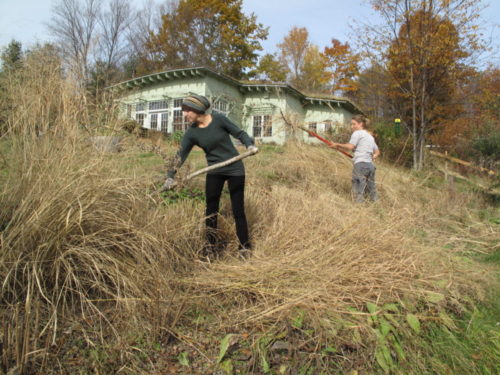
Putting Wildside to Bed for the Season
Autumn’s Work
We finished the season of fieldwork at Wildside Cottage and Gardens at the beginning of November, and on that last Tuesday Rachel and I were still harvesting fresh fruit. We picked over 50 fruits from the medlar tree, Mespilus germanica, and lay them stem side up to blet for a few weeks. The medlar is one of more than 25 food producing species growing in the Edible Forest Garden at Wildside Gardens. It is a fruit that has been cultivated since the Roman age, uncommon now because it has to undergo bletting in order to eat it, – a process beyond ripening in which the cell walls break down and the fruit becomes sweeter, best preserved as a jam.
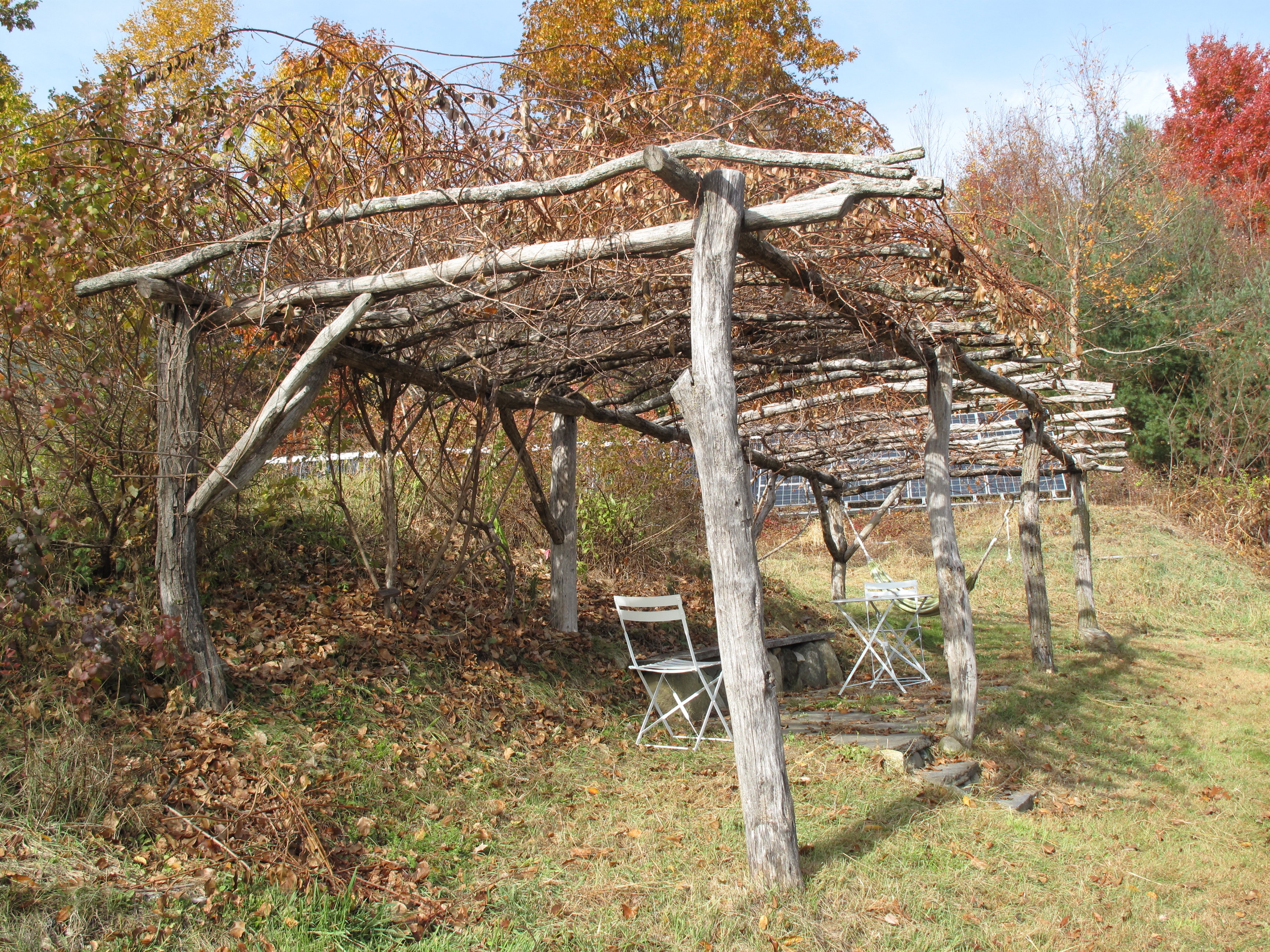
The American persimmons, Diospyros virginiana, were also ripening in late October. The fruits melted in our mouths like pudding. And there were even a few hardy kiwi fruits, Actinidia arguta, left. As all of the leaves around us finally let go of their clinging, it became much easier to spot the kiwis hanging on the vines and they served as a perfect mid-morning snack on the walk up to the house from the garden.
Wildside Cottage and Gardens is an off-grid homestead in Conway – the home of Sue Bridge, a rural New Englander, world traveler, and small-scale rice grower. She purchased the land in 2007, and since then has created her experimental, permaculture-focused homestead in order to demonstrate possibilities for food sovereignty in rural New England. Regenerative Design Group (RDG) has been instrumental in Wildside’s design process since 2008.
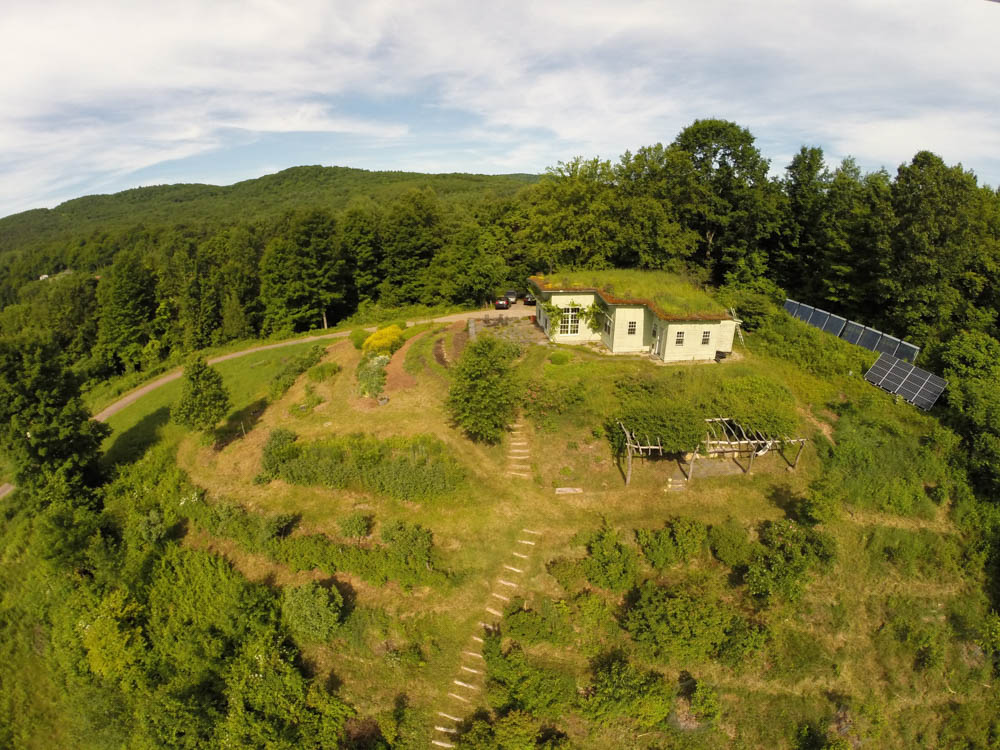
Sue’s heart and soul are visible in every tree nook and flower blossom at Wildside, and in every poison-ivy she masterfully pulled from the ground. The wildness is contained within neat borders, the edges brimming with bounty and diversity. The property is divided into different sections: the forest garden, fruit orchard, nut grove, terrace gardens, and production garden, each serving a distinct niche in the broader picture of the homestead.
Throughout the season I documented plant health and growth in the different areas of Wildside — the goal being to ultimately understand how to optimize food production for uncommon perennial fruits and vegetables. Temperate growing data for some of these plants do not exist yet. I marked time by the flowering, fruiting, ripening, and the dying. We feasted on the fruits of our labor along the way. The raspberries lasted until September, and then the kiwis erupted in October. Poached Asian pears and quince jam for dessert. All the while the bush clover bloomed, and the Queen Anne’s Lace shifted in its skin, it’s snowy blanket wrinkling into curled clusters of seeds in the meadow.
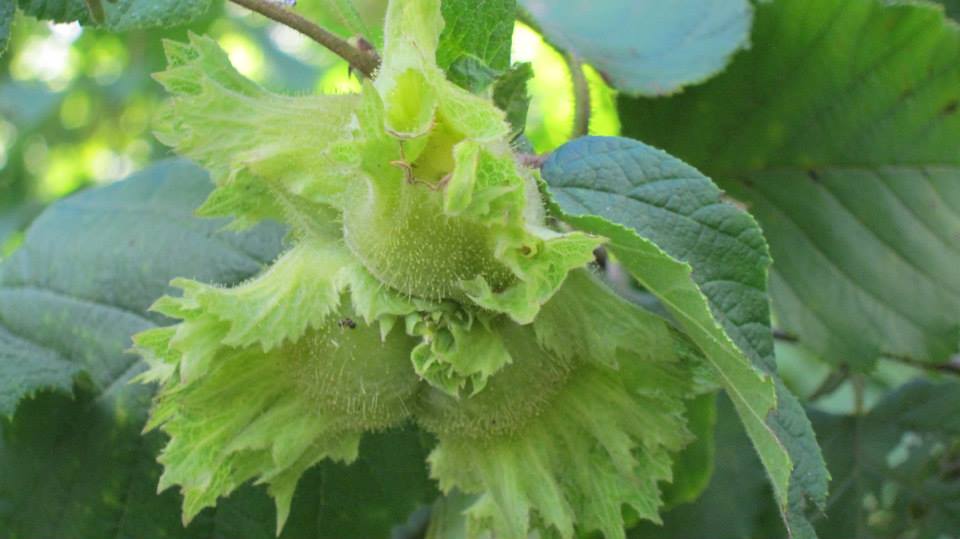
Firsts
It was the first year we got to taste the bush cherries, Prunus japonica x Prunus jacquemontii, in the terrace gardens, the sharp tang of red berry in the early spring. This year was the first season that the hazelnuts, Coryllus avellena, south of the production garden bore more than just a couple of nuts, and we nabbed them before the squirrels did. (We picked them when they were still ‘green ripe’ and continued the ripening indoors through a process Phillip Rutter describes in the book ‘Growing Hybrid Hazelnuts’.)
Rachel and I harvested Elecampane root, Inula helenium, for the first time from the terrace gardens, and we made an herbal extract using grain alcohol and fresh plant material. Elecampane is known as a powerful expectorant in herbal medicine, for clearing the respiratory system of infection. The jar is sitting on my shelf, among other steeping brews and decoctions, the chopped up roots still infusing their medicine into the alcohol for the chills of winter yet to come.
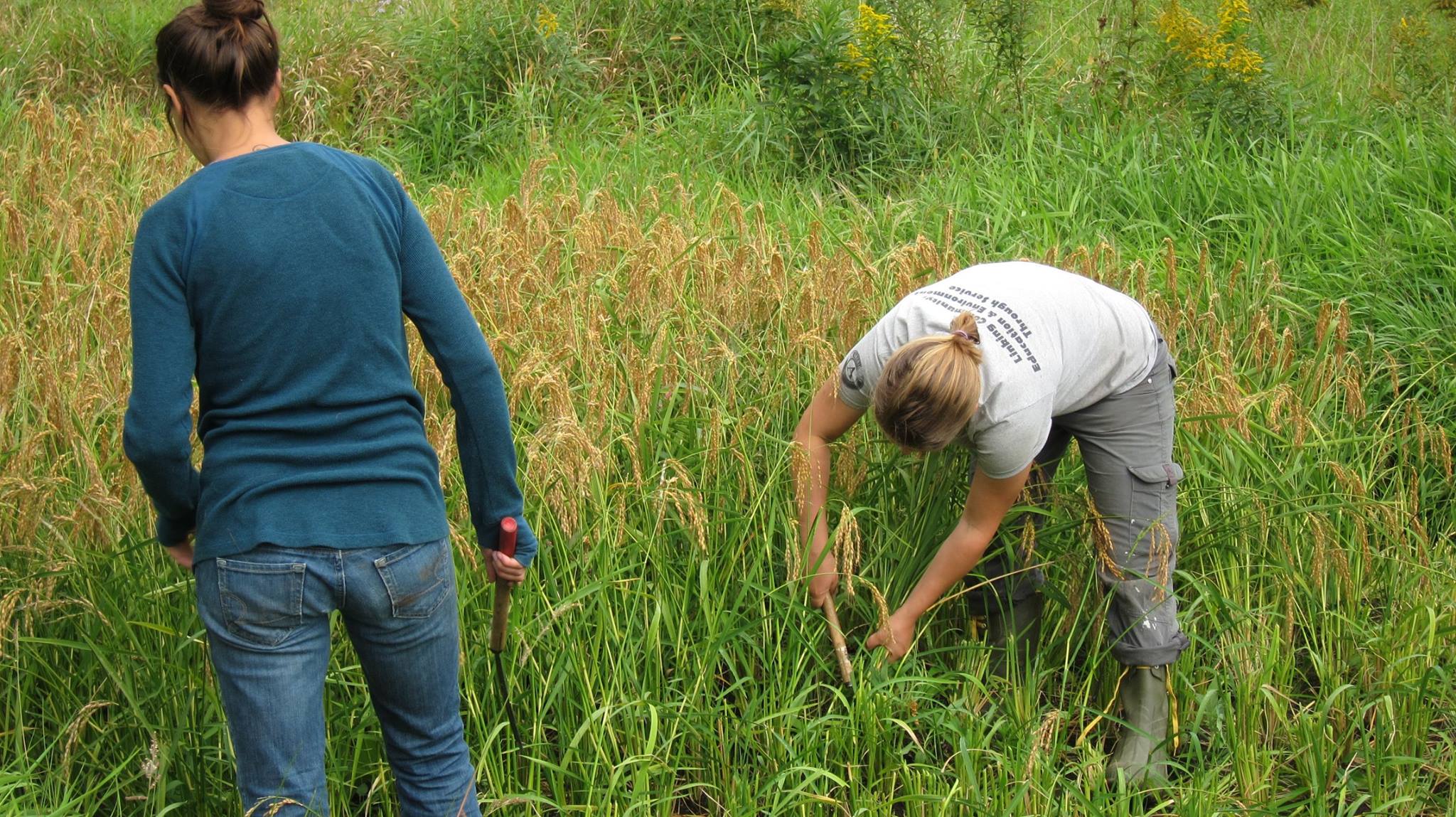
One of my favorite days this season was the rice harvest, engaging in a task so foreign to this region, and yet so intrinsic to our diet. It is Sue’s third year growing rice. Last year she had enough to send away as holiday gifts, and her personal supply lasted until spring. Sue is growing an upland variety of short grain rice that does not require flooding in a 15’ by 30’ paddy down slope of the forest garden.
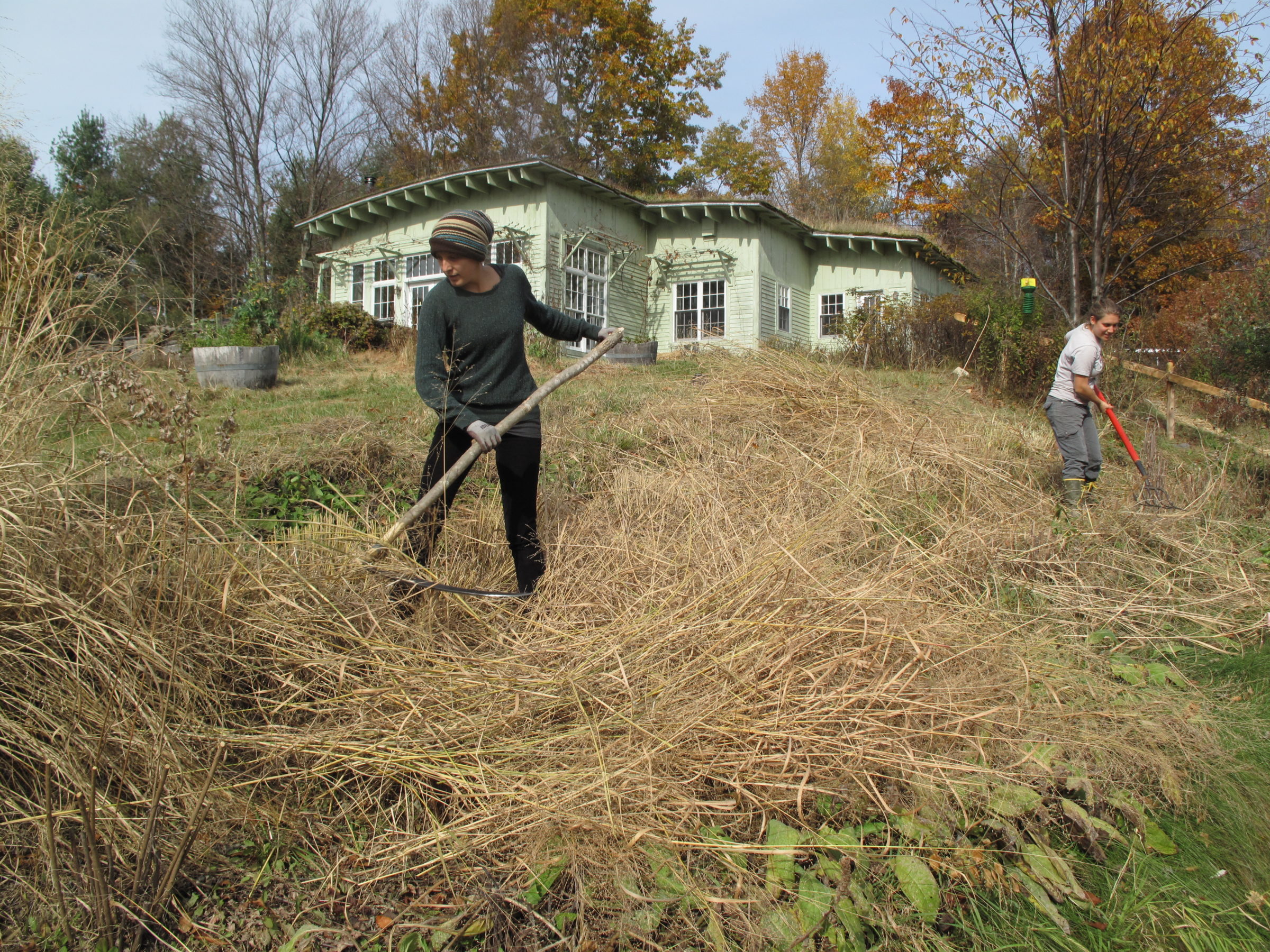
During the last few weeks of the season the energy shifted around us; as usual we talked while we worked, except now there were no leaves to muffle our voices. Our laughter was amplified out into the stillness. The skeletons of the young trees in the forest garden stood out against the evergreen hillside. We gathered what had fallen and placed leafy debris as a heavy mulch layer for the winter.
It’s been three weeks since my last fieldwork day at Wildside. It shines brightly even in it’s sleep, waiting, to begin again next spring.

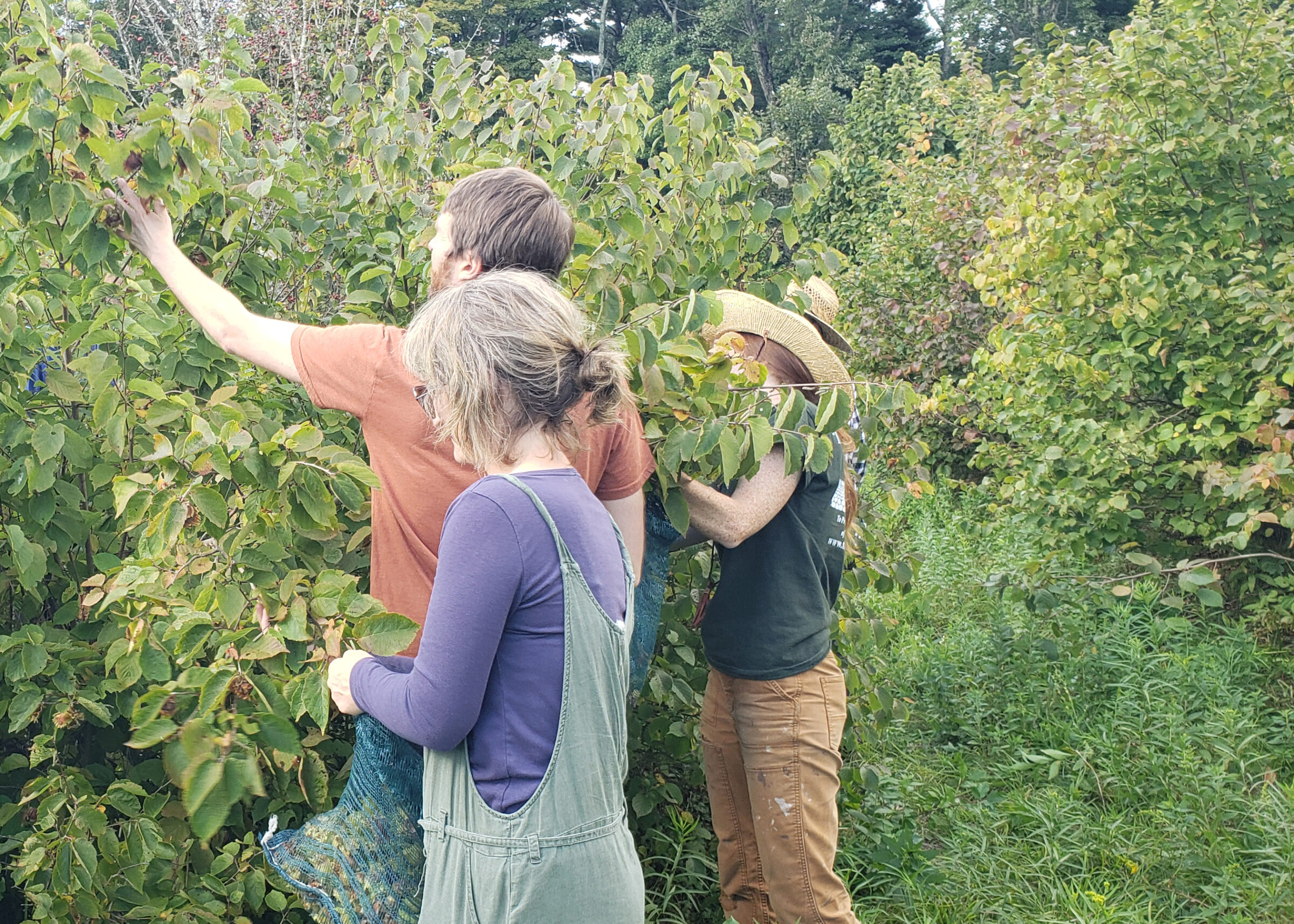
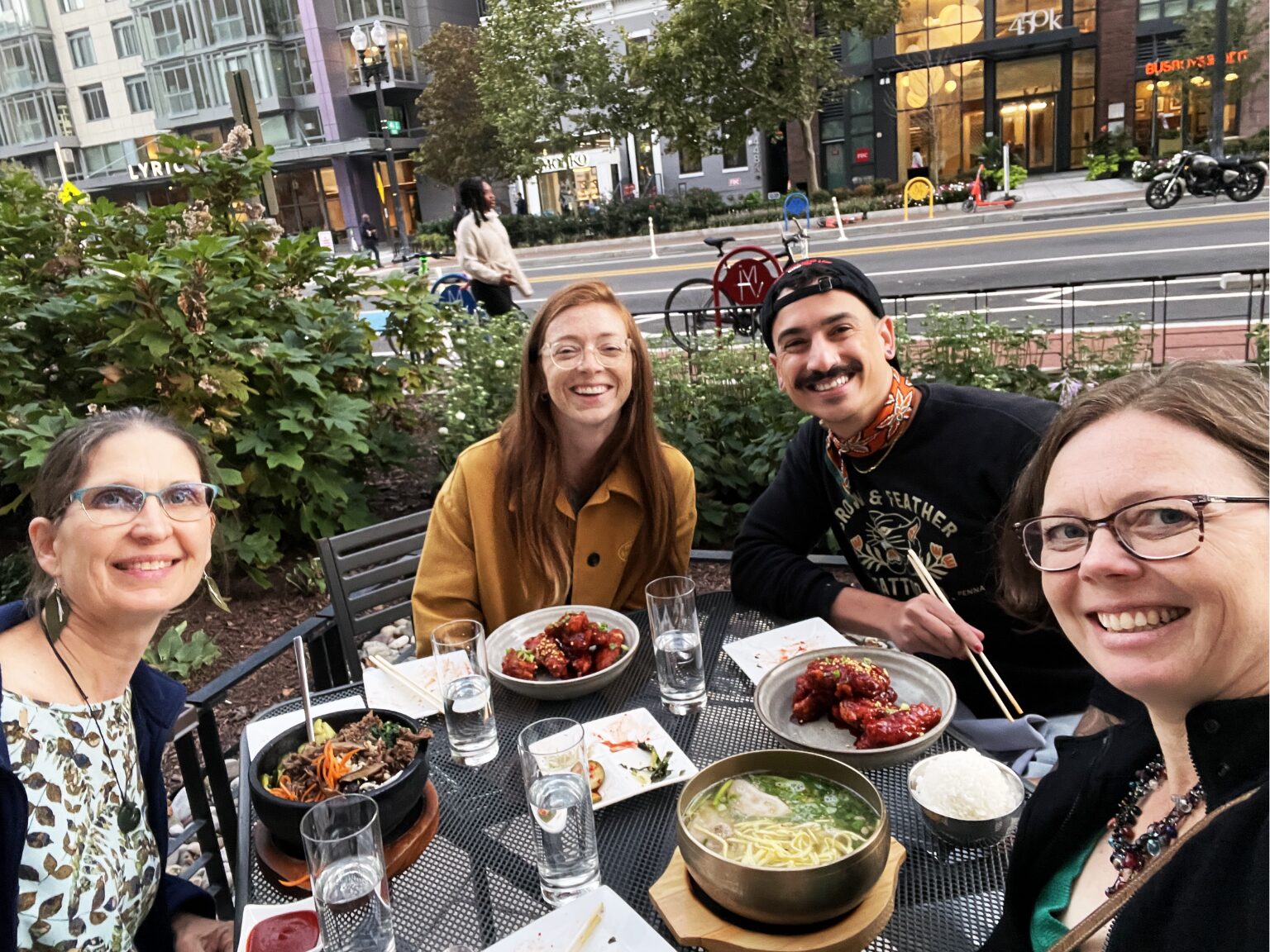
Comments (0)